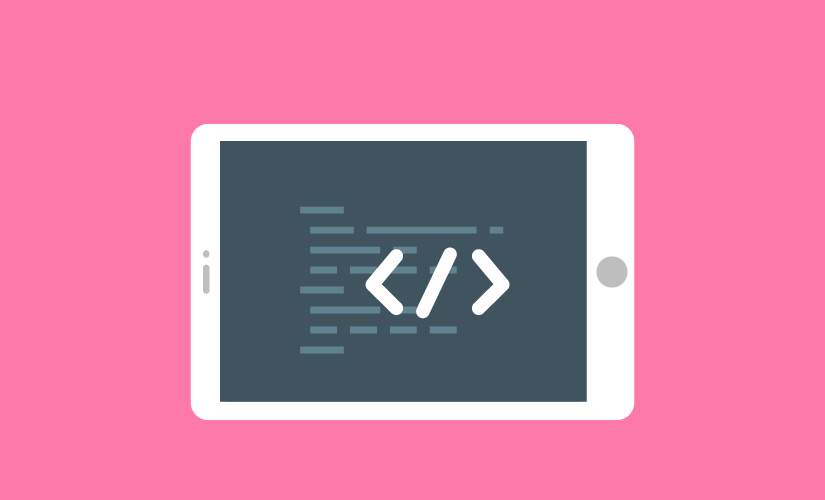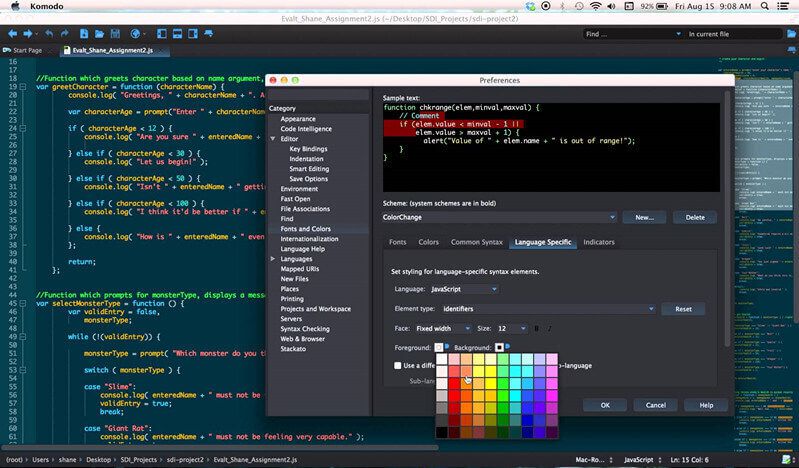Here is a varied list of JSON editors. JSON Editor Online is a web-based tool to view, edit, and format JSON. It shows your data side by side in a clear, editable treeview and in a code editor. Online JSON Viewer, Editor, Beautifier/Formatter, Validator, Minifier – Convert JSONStrings to a Friendly Readable Format,into XML/CSV. Create, code, and manage dynamic websites easily with a smart, simplified coding engine. Access code hints to quickly learn and edit HTML, CSS, and other web standards. And use visual aids to reduce errors and speed up site development.
The best real-time online HTML editor software kit with dynamic instant live visual preview and inline WYSIWYG editor and markup clean-up feature. Includes a HTML viewer, editor, compressor, beautifier and easy formatter. It's impossible to create invalid code with this tool.
How To Use The HTML Editor?
The operation of this HTML editor with built-in HTML Cleaner is very intuitive and it's working in your browser without installing any additional program. Compose your text using the WYSIWYG editor on the left and adjust formatting of the source code on the right. To convert Microsoft Word, PDF or any other rich-text documents to HTML, simply paste it in the visual editor. Perform bulk operations on the HTML code by clicking the Clean button after adjusting the settings.
Before you start composing the content for a live website I advise you to experiment with the features populating the work area with a demo text clicking the Quick Tour menu item.
The visual editor works like a regular text composer program, just use the commands above the text area to adjust the content and in the meantime you'll notice the source editor changing with it. If you're familiar with HTML code composing then you can adjust the code on the right.
Being a free demonstration for the pro version, this tool has its limitations and it adds unwanted links to the edited documents. You can remove these manually before publishing the article.
What Can You Do With This Online WYSIWYG Editor
The control panel above the HTML source editor lists the most important commands:

Other important editing features
You can try these HTML editor features to practice and to maximize your coding efficiency.
- Document converter – To convert any visual document like Excel, PDF, Word to HTML just paste the doc in the visual editor and the markup will show up instantly on the right.
- Online text editor – Compose documents, just like in a rich text editor. Use the control panel to include images, tables, headings, lists and other items to your paper.
- Copy - paste – The editor won't allow you to save the documents. For this you have to copy your generated code into a blank text file, change its extension to .html and open it in a web browser.
- Work with tables – Using the WYSIWYG editor panel you can create a table of any dimmension in only 2 clicks. There's a cleaning option to convert them to styled DIV tags.
- Undo – Both editors have this function which allows to revert back the document to a previous state, ie. before the cleaning has been performed.
- Interactive demo – Take a 4-step tour going through the features clicking the Quick Tour menu item. Learn how to use the redactor and experiment with the demo text.
Never forget:
- Have a backup before using this tool to make sure you can always revert back to your original document.
- Always check your code before publishing on a live website. Check the quality of the article.
- This editor never saves or sends out your document, all operations are performed on your local computer.
- Like most websites, this one uses cookies.
Div Table Styling
Make sure you apply the CSS code below when you publish tables converted to div elements. Try the interactive online table styler which can generate grids from both div and table elements. These are both supported by this editor.
Please note that the class names used by us are slightly different than the ones used by DivTable.com.
Click and copy the code from the field below:

You can use this website absolutely free but by using this tool you accept to link to this website or our partner sites. If you don't want this, please subscribe for a pro HTMLG license and you get even more HTML editing features.
Please send us an email to if you have any suggestion or you just want to say hello.

If you're looking for a free HTML editor that will help you to a make a website quicker and with less mistakes made, this article should help. I'll cover some of the best HTML editors that are freely available at no cost.
Contents

Benefits of an HTML editor
Free Visual Html Editor Mac Software
There's no denying that you can make a website using just a text editor like Notepad and it will be just as functional as a site built using a HTML editor. However, HTML editors have a few features that make a much better choice for writing HTML (and other code like PHP or Javascript):
- Code highlighting. A text file is just that – plain text. With an HTML editor you are able to tell the editor which language of code you're writing in (HTML, PHP, Ruby, Javascript etc) and it will highlight the code for you. This makes it much easier to see any mistakes in the code when compared to black and white in a text editor that make it difficult to find errors.
- Auto-completing tags. Sometimes, especially when learning HTML you might forget the name of a tag you need to use. For example, you might want to make something bold by using the
<strong>tag but can't remember it. Typing just the less than symbol (<) will give you a dropdown list of all the elements so you can easily scan and find what you're looking for. - Error checking. Many free HTML editors have the ability to check your code for any errors that might have been made by mistake, allowing you to fix them. Finding them before making your site live on the web is a much quicker and efficient way to make a website.
- Connecting directly to your hosting. If you already have commercial hosting set up, you can connect your HTML editor to your host using an FTP connection so that whenever you save your file, it is instantly updated on the web. It's a very fast way to publish your website without constantly having to upload via FTP.
WYSIWYG editor or code editor?
There is also a debate over whether it is better for beginners to use a WYSIWYG editor instead of code. WYSIWYG stands for What You See Is What You Get and it allows you to build you web page in a similar way to how you might use Microsoft Word.
With WYSIWYG you can drag and drop, insert images and create numbered or bullet lists using an editor just like in Word. The editor would then take that and create the HTML code for you. There is a huge advantage to this in that beginners do not need to learn how to code an HTML page or remember any tags.
However, there is also an argument that the code these editors create is not as clean or readable by search enginer spiders as code written by hand using an HTML code editor.
From my experience, some WYSIWYG editors work better than others for creating clean code – see the list below for my recommended WYSIWYG editors.
Free HTML editors
Below is a list of some of the more popular free HTML editors available. These are all code-based editors which allow you to build your own pages using HTML code.
- Sublime Text. Sublime Text is a very sophisticated text editor for code and web markup. It has a very easy interface with different color schemes depending on your taste, along with great features like auto-complete elements, code highlighting, split screen mode and a distraction free option which removes all the menus from the editor so you can just write your HTML. It's free to use, but a license for $70 is recommended if you use it long-term.
- CoffeeCup. Another very popular free HTML editor which also comes in a pro version for $49. It has some advanced featured like SiteSpider and Code Cleaner which finds broken links, messy code, and non-compliance to standards. Also, it has built-in FTP to connect to your web server.
- NetBeans. This is a free and open source editor which makes coding your website very quick and easy. It has support for HTML5 and iOS and Android browsers as well so you can make high quality mobile websites as well.
- Aptana Studio. Another open source HTML editor which claims to be the most powerful open source editor available. It provides code assistance for HTML, CSS, JavaScript, PHP, and Ruby – supporting the latest HTML5 specification.
- Notepad++. A very popular editor, which is completely free and open source, that has syntax highlighting as well as syntax folding (so you can hide sections of code to keep things tidy). It also has word and function auto-completion and does have a WYSIWYG interface as well.
- HTML-Kit. This is another HTML editor which has both a free and paid version and it allows you to preview your code as you edit – either inside the editor, or in PCs/Macs, tablets and smart phones. You can also ave time with shortcuts, plugins, code wizards and powerful find/replace options.
- Bluefish. This powerful editor is a lightweight, free, and open source editor with support for multiple languages such as HTML, PHP, Ruby, Python and many more.
Free WYSIWYG editors
If you're not comfortable with HTML code just yet, these WYSIWG editors will allow you to make a web page easily without needing to know any code.
- TinyMCE. This is a very popular web-based HTML WYSIWYG editor used by popular content management systems like WordPress. You can easily add images, links, lists and quotes to your webpage very easily without needing to know any HTML code whatsoever.
- KompoZer. Another great open source project which boasts features like an FTP site manager, a color picker, cleaner HTML code, and a powerful form creator.
- CKEditor. This is a 10 year old, tried and tested free HTML editor with some great features. You can now paste directly from Microsoft Word without breaking any formatting. It also has a very big focus on accessibility – generating websites that can be used by the visually impaired with screen readers and so on. It's also one of the only editors which has inline editing that removes the need for multiple views.
- Aloha Editor. This is a very advanced and powerful HTML5 editor which is also available for WordPress, Drupal and other CMS like Typo3. It also has a front-end editor which you can simply click to begin editing and there is a nifty table tool which lets you add tables just like you would in Microsoft Word.
- Amaya. A free and open source WYSIWYG editor from W3C (who develop the web standards). It is very simple, designed purely for HTML and CSS editing. If you don't need any bells or whistles, this is a good choice.
- SeaMonkey. An all-in-one internet application suite that has dynamic image and table resizing, quick insert and delete of table cells, improved CSS support, and support for positioned layers.
- Trellian WebPage. Provides an intuitive interface with color highlighted HTML and a drag and drop interface that allows you to absolutely position elements on the page. It also has an inbuilt spell checker and supports all major image formats as well.
Which is the best HTML editor?
Free Visual Html Editor Mac Os
This question doesn't have an easy answer and many people will have a difference of opinion depending on their preferences. For me, personally, I have used Adobe Dreamweaver for the past 7 years and have found it to be by far the best HTML editor out there.
It isn't free or cheap, but it is by far the best WYSIWYG editor out there, far surpassing any of the free and open source versions. The code view is equally as impressive and the auto-completing of tags alone is very valuable.
It can be used by both beginners and professional webmasters and is a great choice if you want to invest in the best editor possible. I have a series of Dreamweaver tutorials which will help you to find your feed if you decide on this option.
Html Graphic Editor
Alternatively, my second best editor is Sublime Text – which is free to use but it is strong recommended that you upgrade for an additional $70.
Finally, you can follow my How to Make a Website guide for more details on building your first site – you may not even need an HTML editor if you choose the easier route of installing a CMS like WordPress.